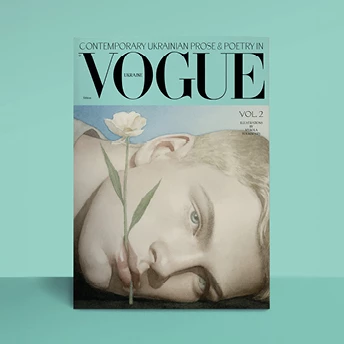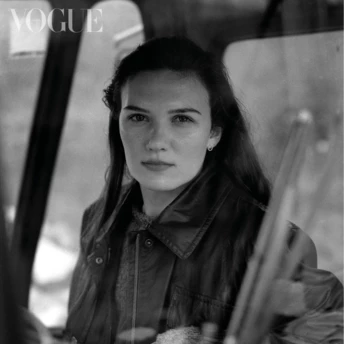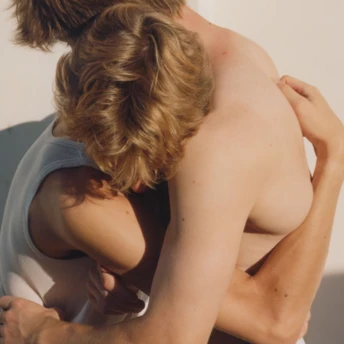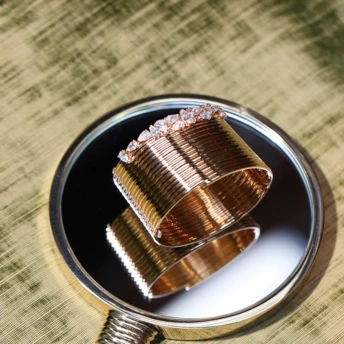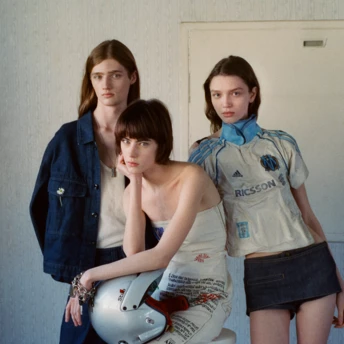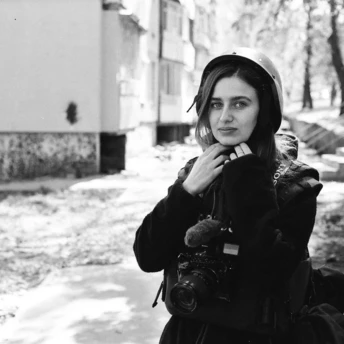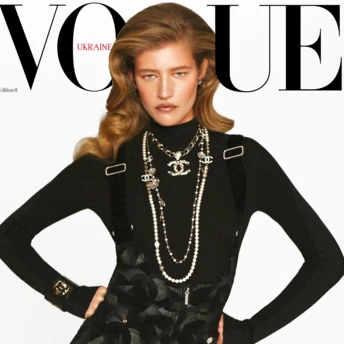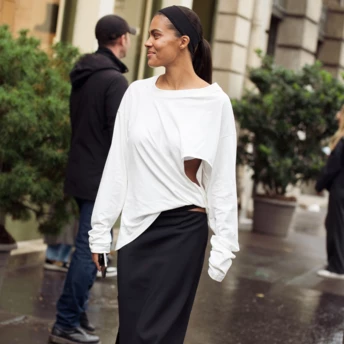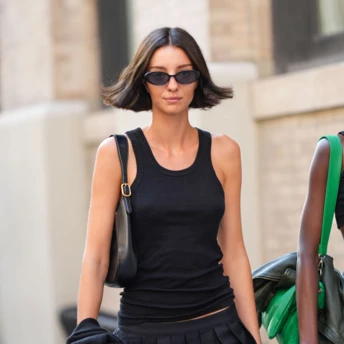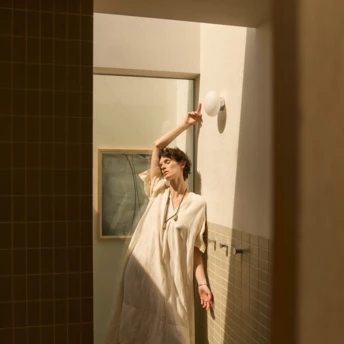Ukrainian artist Pavlo Makov – about Venice Biennale and his native Kharkiv
This April artist Pavlo Makov will represent Ukraine at the Venice Biennale, showcasing his installation "Fountain of Exhaustion. Aqua Alta"
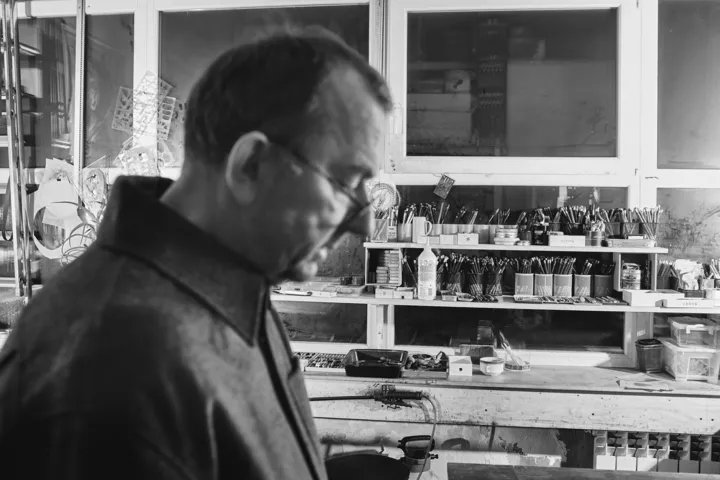 Pavlo Makov in his studio in Kharkiv in December 2021 (Wool shirt, Acne Studios )
Pavlo Makov in his studio in Kharkiv in December 2021 (Wool shirt, Acne Studios )The following is an interview with Pavlo that took place before the full-scale invasion of his homeland. We planned to publish this feature in Vogue MAN s/s 2022 issue, which was to be released in April. At that time, we could hardly imagine that Makov would later be in a shelter – the basement of an art center in Kharkiv, 40 km from the Russian border, as it was shelled daily by the Russian forces. And yet his work has persevered. The curators have managed to evacuate 78 bronze funnels, the core of the Makov’s project, to Poland. So far, the 62-year-old artist has managed to get to Italy. He will present his project to the whole world on April 23.
Pavlo Makov, a well-known Ukrainian graphic artist, and I became friends last summer while working on the Vogue UA FUTURESPECTIVE exhibition, a gathering of exciting cross-disciplinary talents and creative ideas. On seeing his work, I was immediately struck by something very special. I shared my feelings with another participant in the project, sculptor Ilia Novgorodov: "I could fall in love with this artist." He laughed and replied: "Yes, I would fall in love too!" It is difficult for me to decide which of Makov’s Poppies series impressed me the most that day: They are like flowers—each unique in its own wonderful way. Thanks to the multiple intaglio technique in which the artist works, many different graphic images are combined into one composition, becoming a botanical atlas, a geographical map, or a diary of events and meetings.
Makov was born in 1958 in Leningrad. His family moved many times when he was a child, and as a teenager he found himself in the Crimea, in Simferopol. There he studied at the painting department of the Crimean Art School. He later graduated from the Kharkiv Institute of Arts and Crafts, where he studied in the graphics department—a move that would determine his artistic career. He says about that choice: "The thing is that painting is a certain statement. And the picture is still a study. I chose to make drawing and printing my main language. "
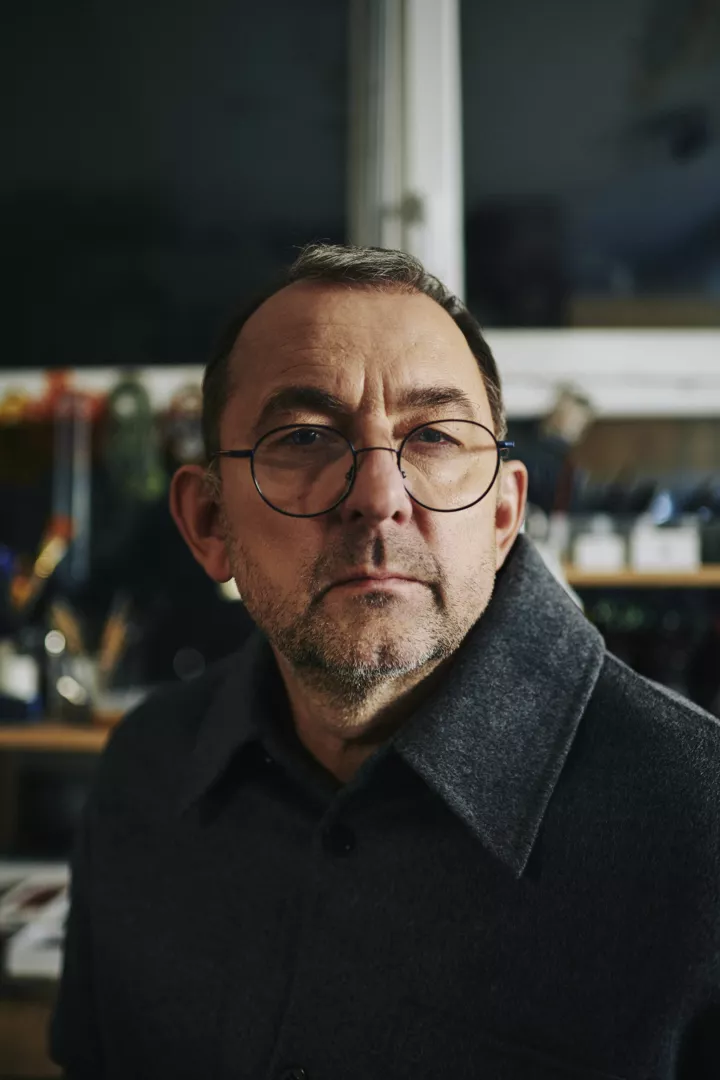 Pavlo Makov in his studio in Kharkiv in December 2021 (Wool shirt, Acne Studios)
Pavlo Makov in his studio in Kharkiv in December 2021 (Wool shirt, Acne Studios)Makov was drawn to intaglio printing and, on his travels, was particularly taken by an exhibition of etchings by Giorgio Morandi, 20th Century Italian master of still life, in Glasgow in 1991. He made the technique his artistic instrument. "Morandi created a whole universe from still life. When I returned to Kharkiv, my works became different," the artist recalls. That year Makov painted his last painting.
Etching is a printing method in which the image is first drawn with acid on a plate of copper or zinc: the elements of the image to be printed are recessed relative to the rest of the plane. It is a long, arduous process. Afterwards, with the help of an etching machine—a press—the picture is transferred from the plate to the paper. This method of printing is described with the melodic Italian word intaglio.
"I have been working with prints all my life. For me, this is a philosophical concept. The print is what you leave behind," the artist says. Despite the complexity of the process, Makov does not create a series of identical prints. Instead, over several months, he uses prints of different sizes to create one work— a multiple intaglio, printing not only on special etching paper, but also on the pages of old books, receipts, maps, and other ephemera. The artist says each print is a "letter." Together they form a "text" which in turn becomes the "story."
 Pavlo Makov's studio in Kharkiv, December 2021
Pavlo Makov's studio in Kharkiv, December 2021Makov was part of the "New Ukrainian Wave", and first became famous for his bright large-format paintings. But he kept some distance from that artistic moment. In the late 1980s, at plein air events organized in the town of Sedniv near Kyiv, he would come to know Pavlo Kerestey, Oleksandr Roitburd, Oleksandr Hnylytski, Oleh Holosiy, and others. They became friends, though Makov did not join the creative party. Collections mattered more than colleagues to his career. (One of his works at the time was purchased by the Victoria and Albert Museum in London, providing an invaluable early endorsement.)
I first meet Makov on a visit to Kyiv last year to discuss the news of his participation in the upcoming Venice Biennale with the work Fountain of Exhaustion. Acqua Alta. The Ukrainian pavilion is curated by The Naked Room Gallery in Kyiv. "I can’t hide my sincere joy," says Makov. "I am very pleased. I never thought of myself as participating at an event like it. Can you imagine how far I was from thinking about the Biennale in 1995?"
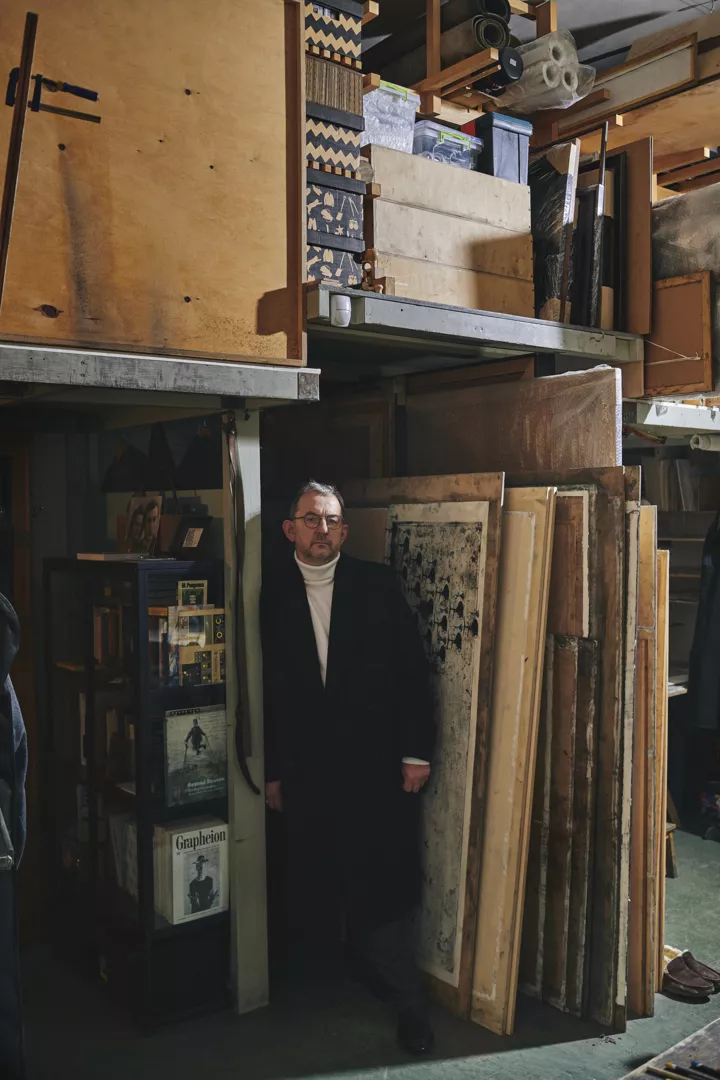 Pavlo Makov in his studio in Kharkiv in December 2021 (Wool coat, cotton turtleneck, all – MISBHV; wool trousers, Nanushka; leather shoes, Maison Margiela)
Pavlo Makov in his studio in Kharkiv in December 2021 (Wool coat, cotton turtleneck, all – MISBHV; wool trousers, Nanushka; leather shoes, Maison Margiela)Though, in fact, its origins can be traced back to 1995 when Makov first created a work that included a watering can. It was a picture "Collection of juice", where suddenly for himself there was a symbol from which the fountain appears – a watering can. "This work shows two rivers of Kharkiv, but I don't know how the watering can came out. I didn't draw it – it was drawn, "he recalls. Then came the first picture with a whole fountain – a multi-tiered symbolic composition composed of funnels.
Over time, this funnel has changed in one way or another – until it turned out, almost literally, into a work for the most important event in the world of contemporary art. However, according to Makov, his work has always surprised the audience: they say, why the fountain of exhaustion, why not saturation? Everyone wanted something positive. Once this watering can even appeared in the form of a silver brooch – as a gift for friends from Germany. In his interviews, the author has repeatedly stated: "Design does not diminish the status of the artist. It's just interesting. Perfect jewelry is better than imperfect painting. The material is not important – emotion and thought are important. "
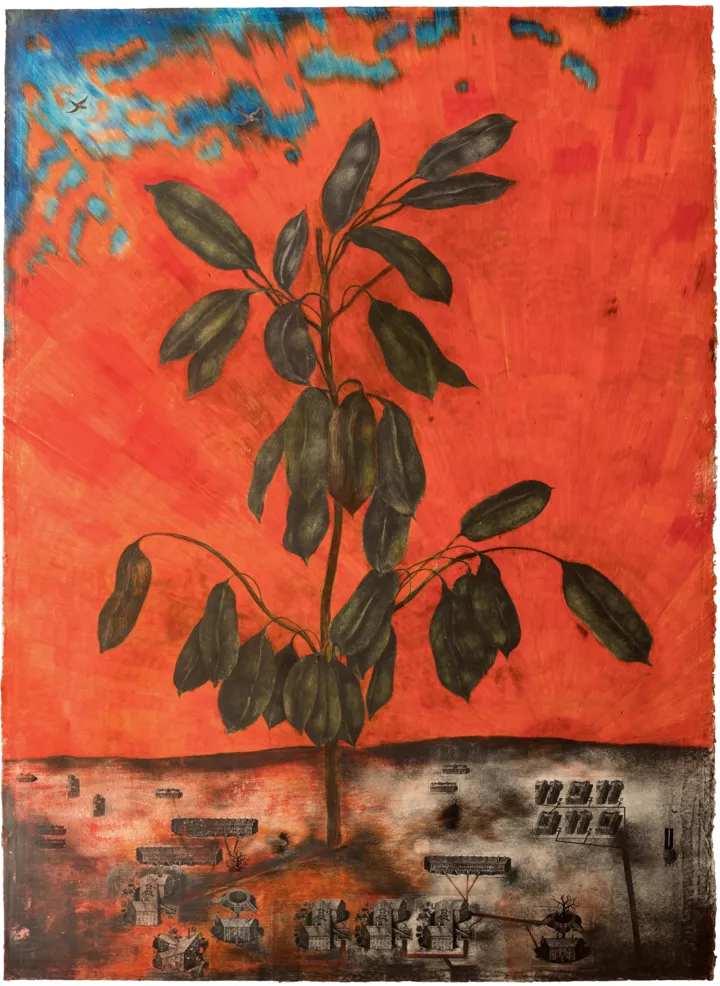 "Morning, ficus, swallows", 2018-2019. Paper, intaglio, acrylic, pencil
"Morning, ficus, swallows", 2018-2019. Paper, intaglio, acrylic, pencilIn the 1990s, the American poet Beth Jocelow invited him to illustrate a book of her poems. But Makov, as a point of principle, does not illustrate other people’s texts. Instead, he proposed a collaboration, starring her poetry and his drawings —April Wars. The Fountain of Exhaustion—and only twelve copies were printed. In 2020, he published Permanent Residence, his drawings accompanying poems by Sergei Zhadan. It became the poetic, graphic story of the two artists and their lives in the city of Kharkiv over almost thirty years. "What Makov is doing, his sense of time, his sense of space and urban landscape, is very much in line with my vision," says Serhiy Zhadan. "In fact, I do something similar in literature, but by other means."
For Makov, Venice feels appropriate. The Fountain of Exhaustion aligns with a city that is disappearing underwater. In his fantasies, the fountain itself could hang on a brick wall, the water falling from it straight into the canal— a perfect presentation of his work. Alas, the exhibition space, the Arsenale, does not allow for the possibility. Instead, for the Biennale, the name Acqua Alta was added—"high water," referring to the seasonal flooding that plagues the city. For Makov, it is not the city that disappears but rather the water; a symbol of time. "This is not a fountain in the literal sense—it is a symbol. Let it flow, let it drip as it is. Let everything happen naturally."
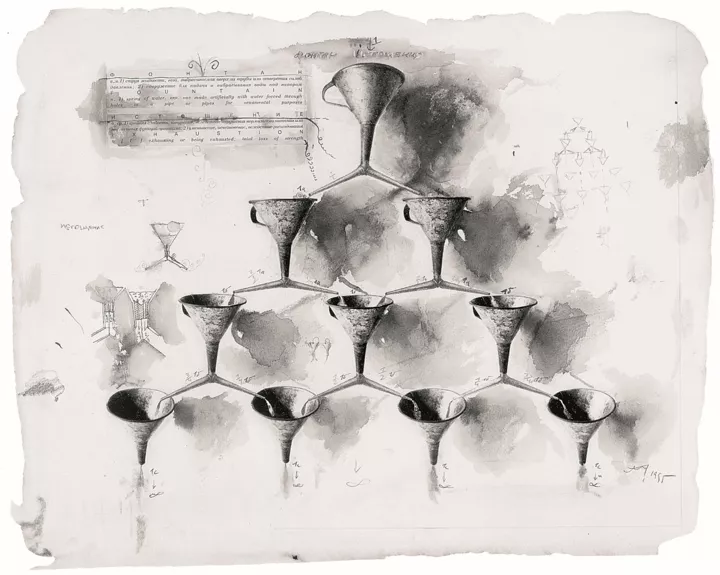 The Fountain of Exhaustion, 1996. Sketch
The Fountain of Exhaustion, 1996. SketchWhen the exhibition in Venice appeared on my list of things, I thought that it would be possible to create such an air temperature that the water, flowing from one row of watering cans to another, would disappear." According to the artist's plan, the water should run from the top rows to the bottom, and the temperature of the latter should be such that the water evaporates only when they reach them. But it is important for Pavlov Makov that there is no artificiality in his art: "This is not a fountain in the literal sense – it is his symbol. Let it flow, let it drip as it is. Let everything happen naturally. "
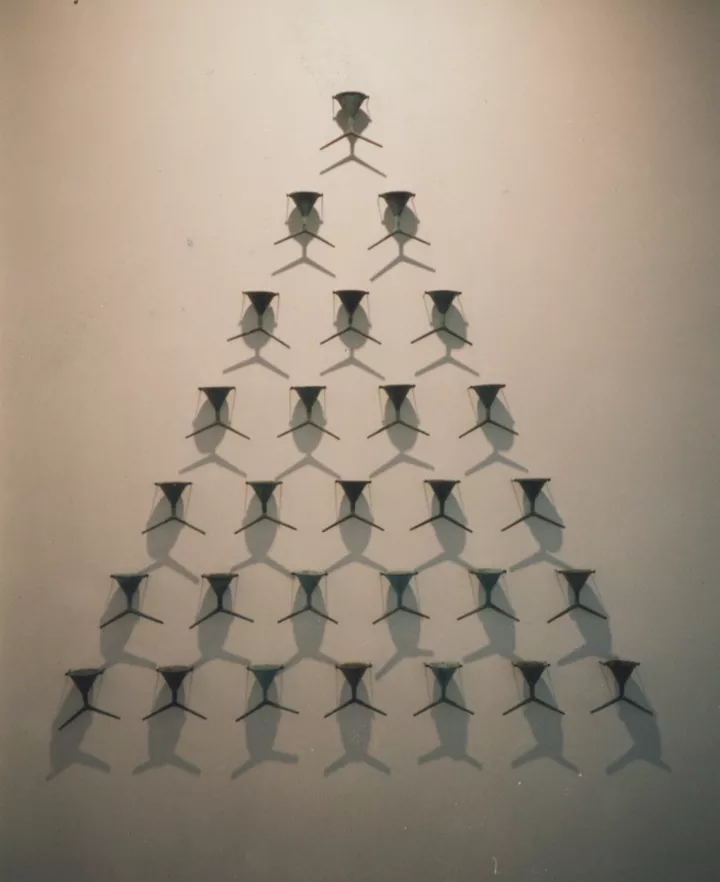 The Fountain of Exhaustion, 2003. Bronze model, PinchukArtCentre collection
The Fountain of Exhaustion, 2003. Bronze model, PinchukArtCentre collectionVenice has long been special for Makov. It was the first Italian city he visited in the late 1990s. "On my second visit, I fell in love with Italy once and for all. Both of my favorite artists, Titian and Francesco Guardi, lived and worked here," he says. He has mastered the Italian language, adding that when you study language and culture, and friends appear, the city on the map gains volume— like a pop-up book.
Cartography is another important component of Makov's work. He creates personal maps, reflecting real and significant places for him. They are all about Kharkiv. This practice appeared in the early 1990s as a way to process life in a newly born country; a way to construct a new world. "I did not want the Soviet Union to continue. Its disintegration brought me only joy," he says. "I realized then that I could understand myself in this place by creating a map." Each one is a biography: "You look at the map—it's as if you're watching a movie about what happened to you and you see your personal path."
The artist is also attracted by maps of gardens. The project, which began after cities and maps, is called "Gardens". The artist creates a plan of the ideal garden where he dreams of being. The intention appeared during a trip to Versailles: not wanting to stand in a giant queue for the royal palace, Makov walked in the garden, planted in the XVII century by Louis XIII. "The park made an incredible impression on me, because it is a work of man, and therefore a kind of art. The thought is striking: its creators realized that they would not have time to see their plan realized in their lifetime, "Pavlo explains.
 Garden for Mrs. M, 2009-2010. Paper, intaglio, drawing
Garden for Mrs. M, 2009-2010. Paper, intaglio, drawingMany people know Makov's works with a plan of a fantastic garden, as if planted according to the scheme of dactyloscopic lines – the project "Touch". The routes through this garden are very personal, because every fingerprint belongs to a real person – and you seem to read the whole destiny, the whole life story on it at once.
In 2010, continuing the theme of gardens, Pavlo Makov created an artbook "Donrose". This is the diary of an imaginary gardener, where instead of texts there are drawings: 15 images of the planned Donetsk rosary. If you remove the mount of the artbook – the pages are incredibly folded into a giant plan "Donrose".
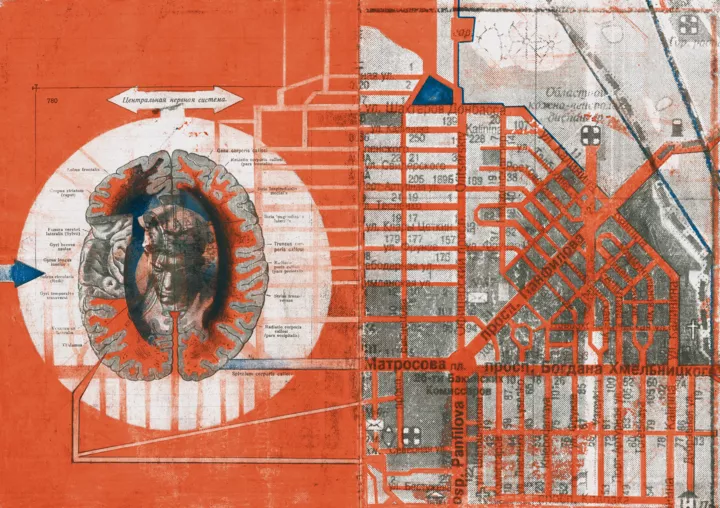 Page from the art book "Donrose", 2008-2010
Page from the art book "Donrose", 2008-2010Today, Makov continues to live in Kharkiv. Before the war, on his personal map, there are four main spots indicating where he spends his time: his house, workshop, the 3Z design studio he established with some friends, and a cottage 20 kilometers from the city. There is a spartan order in Paul's studio. He says: "Many people think that artists should be surrounded by a mess, while I have all my colored pencils organized in stands."

On easier days, the Makov family spent a lot of time in the country, surrounded by nature. Apple trees and fabulous spruce trees grow in his garden. There, in his country house, he has a private collection of works by contemporary artists: a two-meter canvas by Pavlo Kerestey, works by artist Elena Kudinova, who was a close friend for many years, paintings by Oleksandr Roitburd, Vlada Ralko, and Hamlet Zinkovsky, ceramics by Elena Blank. Makov does not take much part in the local social scene, keeping busy with his work instead. Last year he had a solo exhibition at the private museum of contemporary art in Lutsk; this January, new works were presented at the Odessa Art Museum, albeit briefly.
Typically, twice a year Makov and his wife Marina (Masha, as Paul calls her) travel to Italy for a few weeks. As their Italian improved, the routes became more interesting and enjoyable. "What once sounded like the chattering of birds has become understandable phrases," says the artist. At the end of winter, the family likes to spend time at the thermal springs near their beloved Padua. When Makov and Masha go to Italy each September, they go to the sea, to the south of Tuscany. There, in the town of Porto Santo Stefano, the artist likes to sit in a cafe on the main square, drink spritz, and watch the locals.
Well, despite the war in Ukraine, Pavlo Makov was able to get to Venice, where his famous "Fountain of Exhaustion", no matter how paradoxical it may sound, will be filled with Venetian water.
Text: Svitlana Starostenko
Photo: Dima Honcharov
Style: Anna Honcharova
Grooming: Anastasia Silevko
Style assistant: Anya Matviiuk


